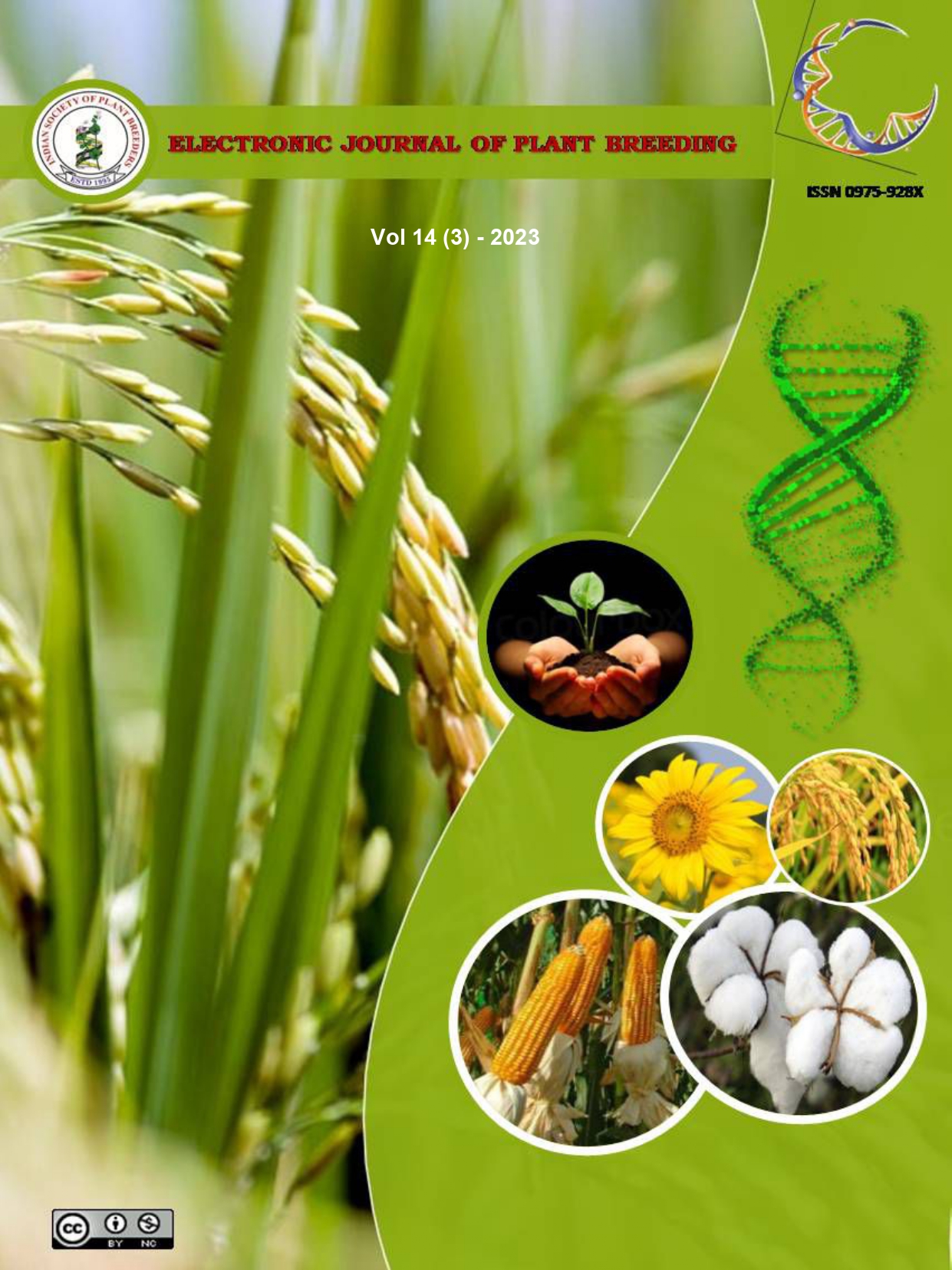Study on combining ability and heterosis for yield and nutritional traits in rice (Oryza sativa L.)
Abstract
Rice (Oryza sativa L.) is the staple food for more than 50% of the world’s population. Micronutrient malnutrition is a significant issue affecting approximately 2 billion people globally with severe levels of hunger. Fifteen hybrids derived through 6 x 6 half diallel mating were evaluated along with the six parents in a randomized block design at Tamil Nadu Rice Research Institute, Aduthurai during Kharif, 2022. Analysis of variance showed significant differences among the genotypes for all the traits except for the flag leaf width. The GCA effects of CO54 and Kalanamak were significant for most of the quantitative traits including grain yield, indicating the usefulness of these two genotypes for improving yield contributing traits. The parents such as Kalanamak and Chinkinikar registered high mean values for Fe and Zn and therefore these two parents can be exploited to develop Fe and Zn rich high yielding varieties. Analysis of specific combining ability and heterosis per se of the hybrids indicated that the crosses viz., ADT56/Kalanamak, CO54/ Kalanamak and CO54/Chinkinikar were best hybrids for improving yield as well as nutritional traits.

